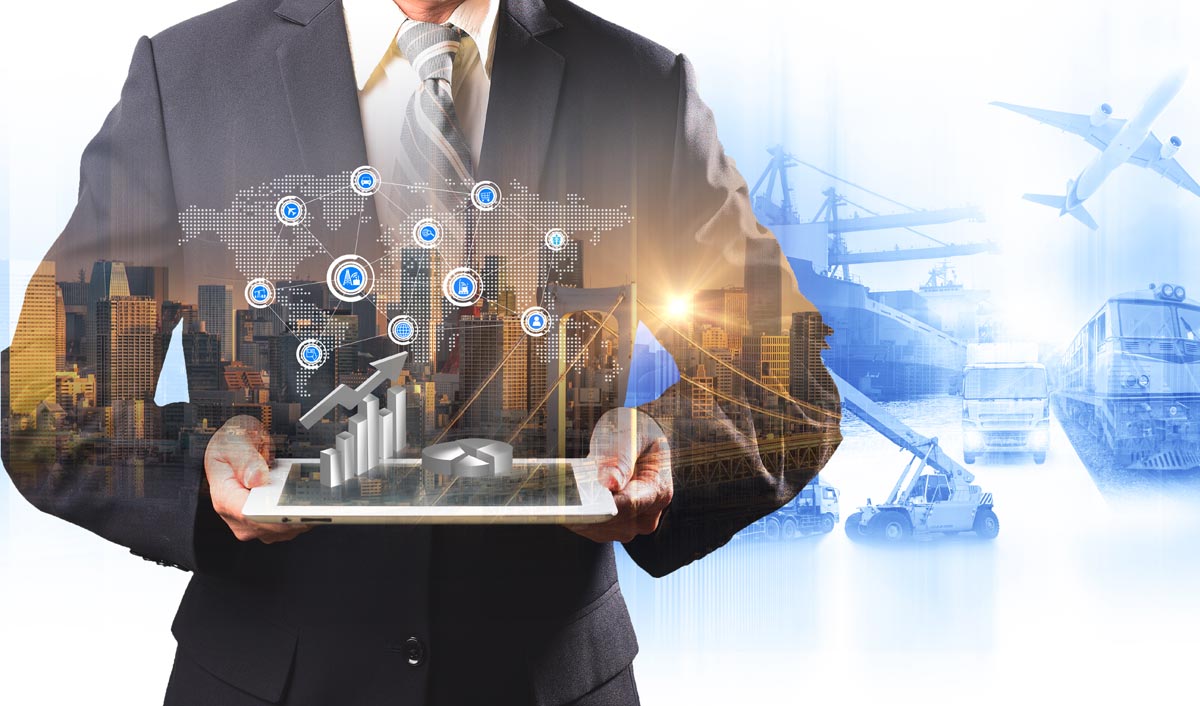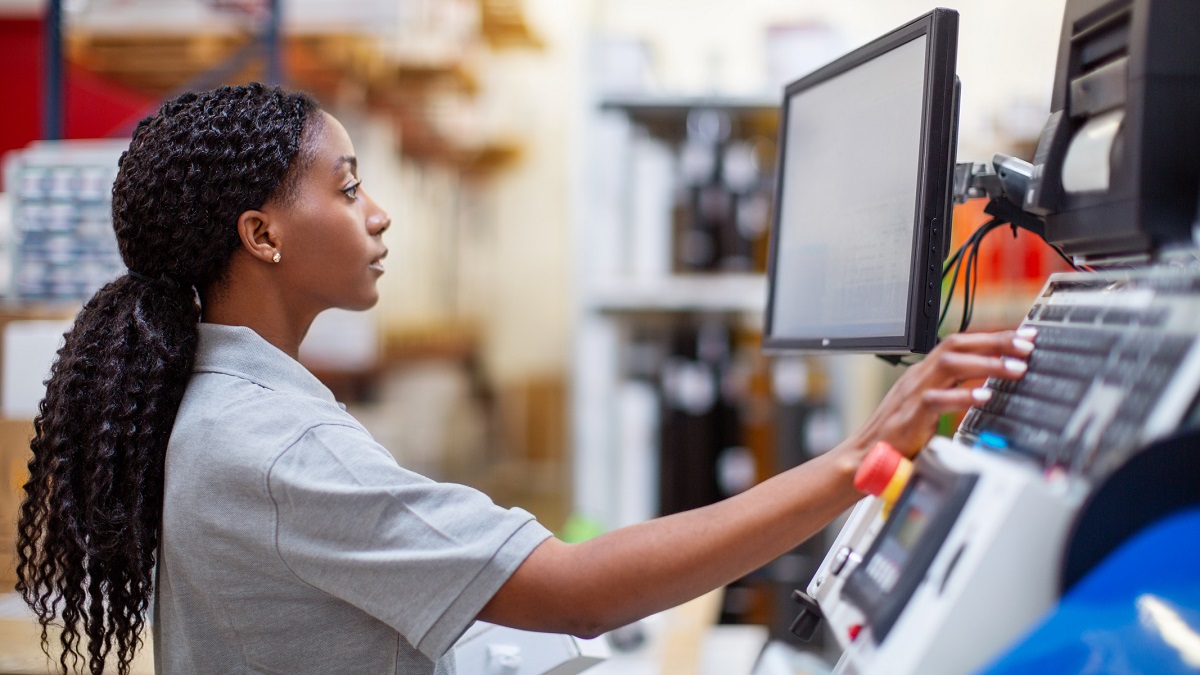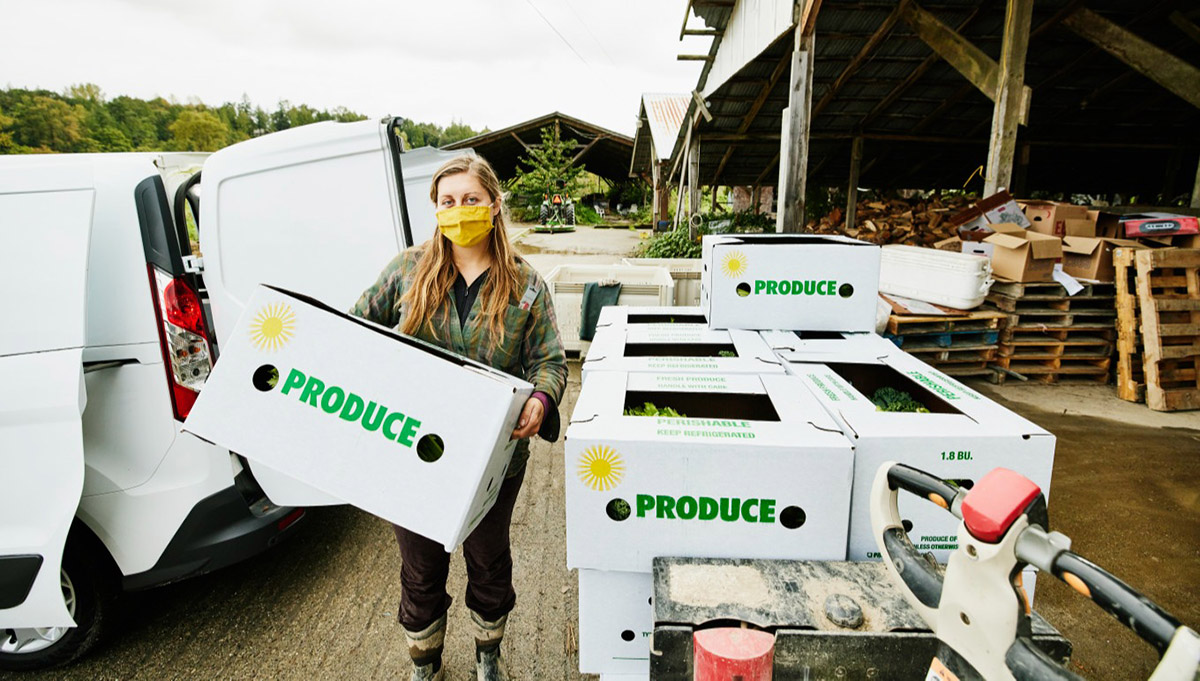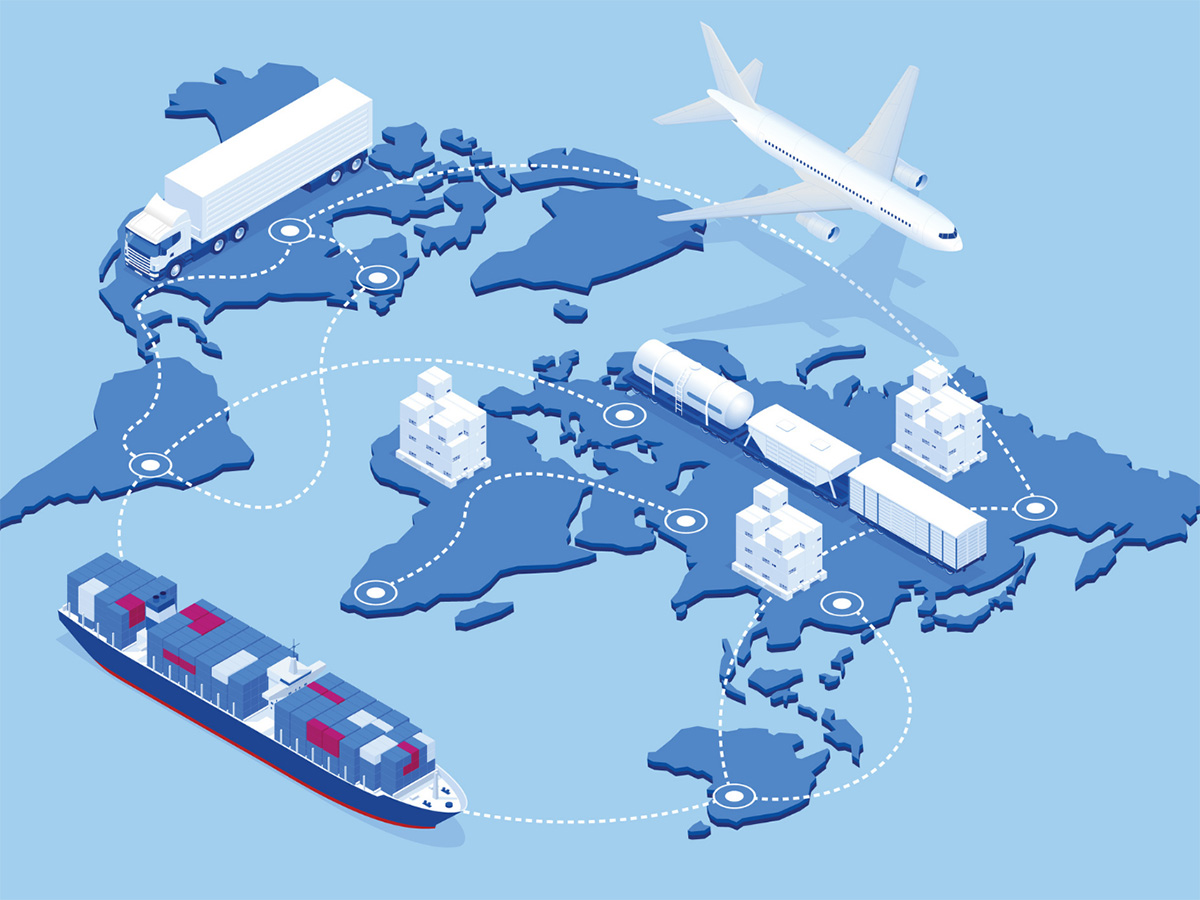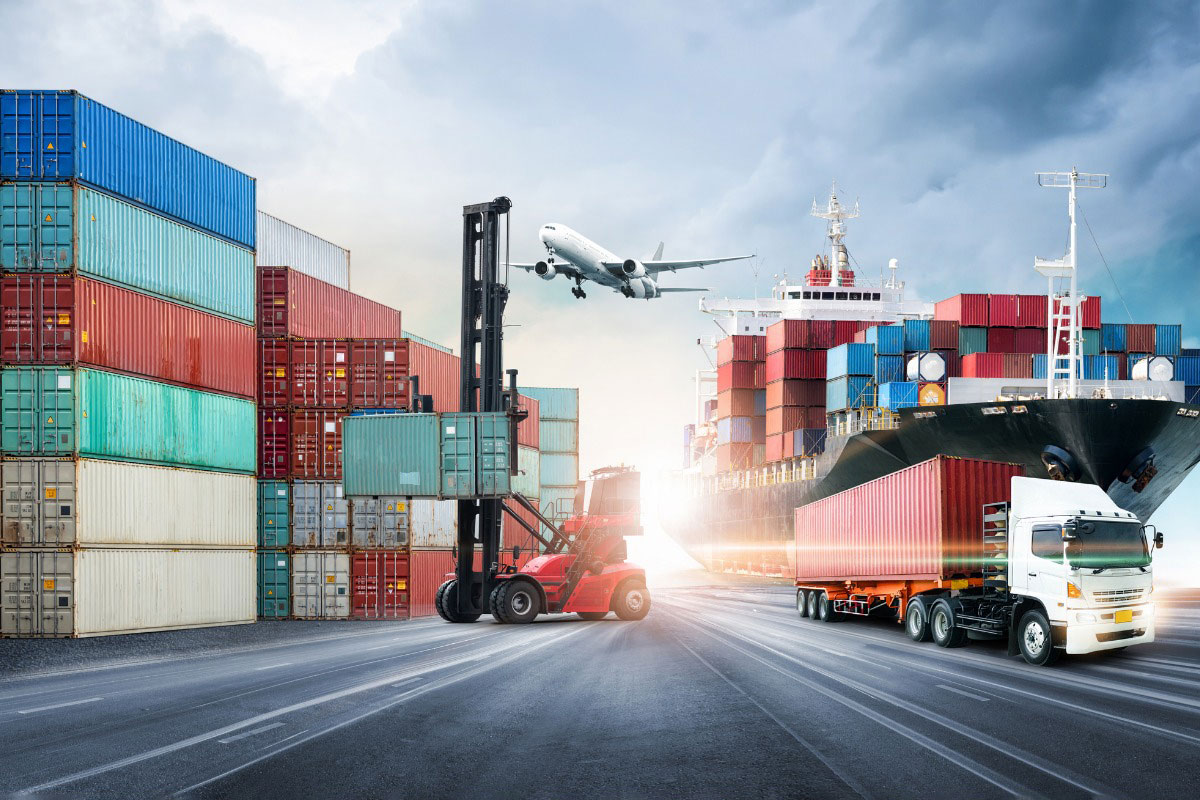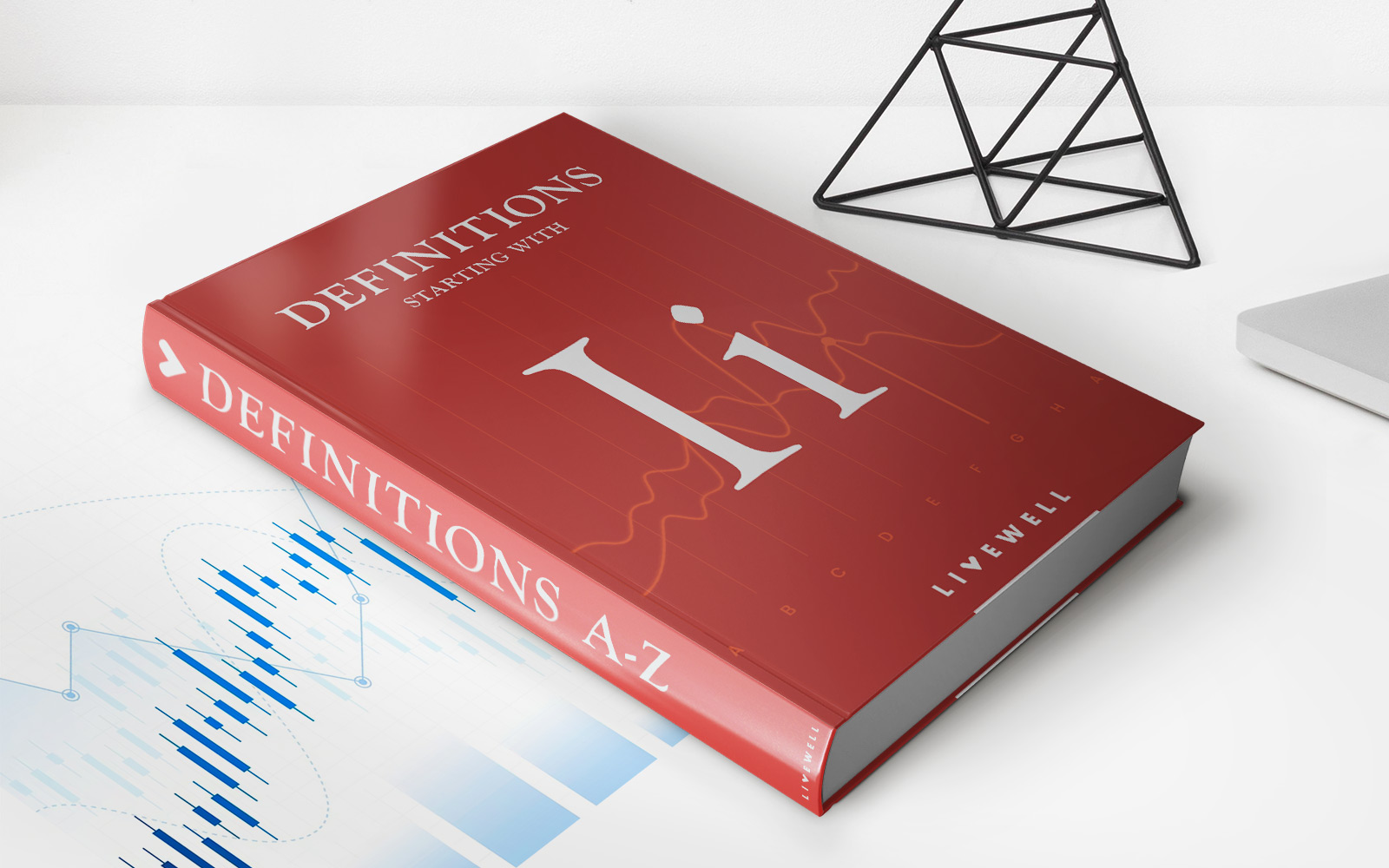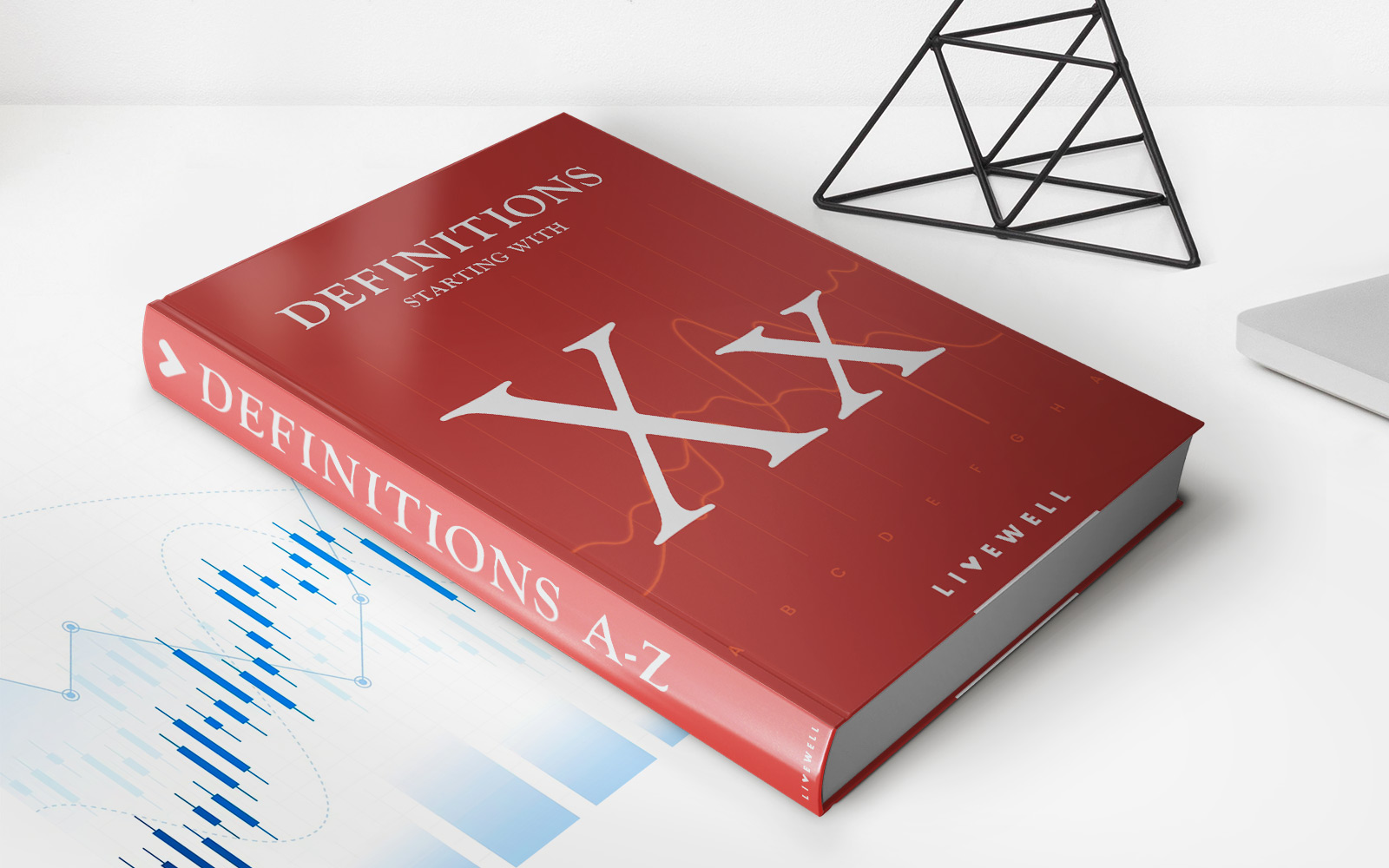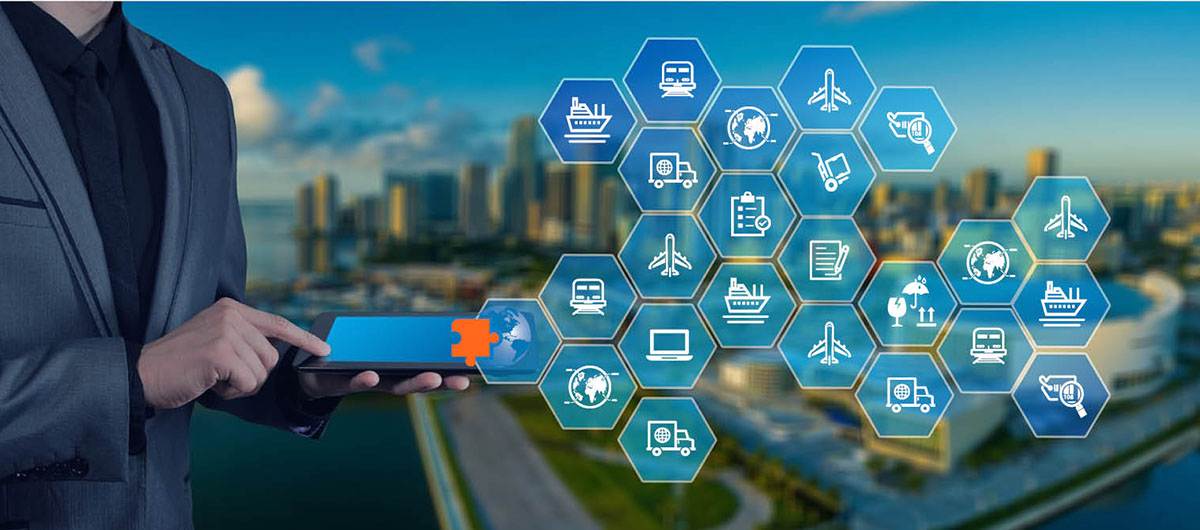

Finance
What Is A Supply Chain Control Tower?
Modified: February 21, 2024
Learn how a supply chain control tower can revolutionize your finance processes, improving visibility, efficiency, and cost-effectiveness. Discover the benefits today!
(Many of the links in this article redirect to a specific reviewed product. Your purchase of these products through affiliate links helps to generate commission for LiveWell, at no extra cost. Learn more)
Table of Contents
- Introduction
- Definition of a Supply Chain Control Tower
- Functions and Objectives of a Supply Chain Control Tower
- Benefits of Implementing a Supply Chain Control Tower
- Key Components of a Supply Chain Control Tower
- Technologies Used in Supply Chain Control Towers
- Challenges and Considerations in Implementing a Supply Chain Control Tower
- Case Studies of Successful Supply Chain Control Tower Implementations
- Conclusion
Introduction
In today’s globalized and complex business environment, supply chain management plays a crucial role in the success of any organization. Efficiently managing the flow of goods, information, and finances across the supply chain is essential to meet customer demands, minimize costs, and improve overall operational efficiency.
With the increasing complexity of supply chains, companies are facing numerous challenges such as demand volatility, inventory optimization, delivery delays, and lack of visibility. These challenges can have a significant impact on the overall performance of the supply chain and the bottom line of the organization. To address these challenges and gain better control over their supply chain operations, companies are turning to a powerful tool known as a Supply Chain Control Tower.
A Supply Chain Control Tower acts as a central hub providing real-time visibility, analytics, and decision-making capabilities across the entire supply chain network. It integrates data from various sources, such as suppliers, manufacturers, logistics providers, and customers, to offer a holistic view of the supply chain activities.
By leveraging advanced technologies like IoT (Internet of Things), AI (Artificial Intelligence), and Big Data analytics, a Supply Chain Control Tower enables organizations to have a comprehensive understanding of their supply chain processes and make data-driven decisions. It empowers companies to anticipate disruptions, identify bottlenecks, and proactively respond to changes, thereby achieving operational excellence and delivering superior customer service.
The supply chain control tower concept originated from the aviation industry, where control towers are used to monitor and manage the movement of aircraft. Just as an airport control tower provides complete visibility and control of all aircraft operations, a supply chain control tower provides the necessary visibility and control across the supply chain ecosystem.
In recent years, supply chain control towers have gained immense popularity across various industries, including manufacturing, retail, logistics, and healthcare. Companies are recognizing the potential of implementing a control tower to optimize their supply chain operations and drive competitive advantage in the market.
In the following sections, we will delve deeper into the definition, functions, benefits, key components, technologies used, challenges, and successful case studies of supply chain control tower implementations.
Definition of a Supply Chain Control Tower
A Supply Chain Control Tower is a centralized platform that provides end-to-end visibility, monitoring, and coordination of all supply chain activities. It serves as a command center for managing the flow of goods, information, and finances across the entire supply chain network.
The primary purpose of a Supply Chain Control Tower is to aggregate, analyze, and visualize data from multiple sources within the supply chain ecosystem. This includes data from suppliers, manufacturers, logistics providers, carriers, distributors, and even customers. By integrating this data, the control tower creates a unified and holistic view of the supply chain, allowing companies to make informed decisions and respond quickly to changes and disruptions.
One of the key features of a Supply Chain Control Tower is real-time visibility. It provides stakeholders with updated and accurate information about the status of inventory, shipments, production, and other key performance indicators. This enables proactive monitoring and helps to identify potential bottlenecks or issues before they escalate, allowing for timely interventions and resolutions.
Furthermore, a Supply Chain Control Tower facilitates collaboration and communication among different parties within the supply chain. It acts as a platform for sharing information, exchanging data, and collaborating on tasks and processes. This promotes transparency, enhances coordination, and fosters effective decision-making.
In essence, a Supply Chain Control Tower functions as the nerve center of the supply chain, connecting various systems, processes, and stakeholders. It enables organizations to achieve end-to-end visibility, optimize operations, reduce costs, improve customer service, and ultimately drive business growth.
It’s important to note that while the concept of a Supply Chain Control Tower is similar across industries, the specific functionalities and capabilities may vary based on the unique requirements and characteristics of each organization.
In the next sections, we will explore the functions, benefits, key components, technologies used, challenges, and successful case studies of supply chain control tower implementations.
Functions and Objectives of a Supply Chain Control Tower
A Supply Chain Control Tower serves a wide range of functions and objectives to enable efficient and proactive management of the supply chain. Let’s delve into some of the key functions and objectives:
1. Real-time visibility: The primary function of a Supply Chain Control Tower is to provide real-time visibility across the entire supply chain network. It collects and integrates data from various sources in real-time, giving stakeholders a comprehensive view of inventory levels, order statuses, transportation movements, and other critical information. This real-time visibility empowers organizations to monitor supply chain activities, anticipate disruptions, and make agile decisions.
2. Performance monitoring and analytics: A Supply Chain Control Tower tracks and analyzes key performance indicators (KPIs) to assess the overall performance of the supply chain. It generates reports, dashboards, and visualizations that help stakeholders identify areas of improvement, track operational metrics, and facilitate data-driven decision-making. By monitoring performance, organizations can proactively mitigate risks, optimize processes, and drive continuous improvement.
3. Collaboration and communication: Supply Chain Control Towers facilitate collaboration and communication among stakeholders within the supply chain ecosystem. It enables seamless information sharing, data exchange, and task coordination between suppliers, manufacturers, carriers, and other partners. Effective collaboration enhances visibility, promotes efficient workflows, and improves overall supply chain responsiveness.
4. Demand and supply planning: Control Towers leverage demand sensing technologies to capture real-time demand signals, market trends, and customer insights. These capabilities enable accurate demand forecasting and enhance supply planning accuracy. By aligning demand and supply, organizations can optimize inventory levels, minimize stock-outs, and improve customer satisfaction.
5. Risk management and mitigation: Control Towers enable organizations to proactively manage and mitigate risks in the supply chain. By monitoring external factors such as weather conditions, geopolitical events, or supplier performance, companies can identify potential disruptions and take appropriate actions to minimize their impact. This proactive risk management helps protect the supply chain from disruptions and ensures business continuity.
6. Exception management: Supply Chain Control Towers highlight exceptions and deviations from the norm in real-time. By automatically flagging issues such as late deliveries, quality defects, or inventory discrepancies, organizations can quickly identify and address these exceptions. This enhances operational efficiency, reduces delays, and improves customer satisfaction.
7. Continuous improvement and optimization: Control Towers provide insights into the supply chain performance, allowing organizations to identify areas for continuous improvement. By analyzing data, identifying bottlenecks, and implementing process optimizations, companies can achieve cost savings, reduce lead times, improve service levels, and ultimately enhance overall supply chain performance.
The objectives of a Supply Chain Control Tower are to optimize supply chain operations, enhance visibility, improve collaboration, minimize costs, mitigate risks, and deliver superior customer service. By leveraging these functions and objectives, organizations can drive operational excellence, gain a competitive advantage, and thrive in today’s dynamic business environment.
Benefits of Implementing a Supply Chain Control Tower
Implementing a Supply Chain Control Tower offers numerous benefits to organizations across various industries. Let’s explore some of the key advantages:
1. Enhanced visibility: Supply Chain Control Towers provide end-to-end visibility of the supply chain, enabling stakeholders to monitor activities in real-time. This visibility allows organizations to proactively identify bottlenecks, track inventory levels, and monitor order statuses, leading to improved operational efficiency. With better visibility, companies can make informed decisions, respond quickly to disruptions, and minimize delays.
2. Improved decision-making: By integrating data from different sources, a Supply Chain Control Tower provides stakeholders with accurate and up-to-date information. This empowers organizations to make data-driven decisions based on real-time insights. With improved decision-making, companies can optimize inventory levels, manage demand fluctuations, streamline production, and enhance customer service to gain a competitive edge.
3. Enhanced collaboration and communication: Supply Chain Control Towers act as a central platform for collaboration and communication among different stakeholders within the supply chain. It enables seamless data sharing, facilitates task coordination, and improves overall supply chain responsiveness. Enhanced collaboration leads to improved coordination, reduced lead times, and better customer satisfaction.
4. Increased operational efficiency: Supply Chain Control Towers enable organizations to streamline their supply chain processes and eliminate inefficiencies. By automating manual tasks, optimizing workflows, and reducing paperwork, companies can improve operational efficiency and reduce costs. Increased efficiency also leads to faster order fulfillment, reduced cycle times, and improved customer responsiveness.
5. Improved inventory management: With real-time visibility and accurate demand forecasting, Supply Chain Control Towers help organizations optimize inventory levels. They enable organizations to maintain the right amount of stock at the right locations, minimizing excess inventory and reducing carrying costs. Improved inventory management leads to improved working capital management and overall cost savings.
6. Proactive risk management: Supply Chain Control Towers enable proactive risk management by providing real-time alerts and notifications about potential disruptions. By monitoring external factors, such as weather conditions or geopolitical events, organizations can mitigate risks and develop contingency plans. Proactive risk management helps minimize supply chain disruptions, ensuring business continuity and customer satisfaction.
7. Cost savings: Implementing a Supply Chain Control Tower can result in significant cost savings. By eliminating inefficiencies, optimizing inventory levels, and improving operational processes, organizations can reduce costs associated with transportation, warehousing, and inventory holding. Cost savings directly impact the bottom line and contribute to the overall financial performance of the organization.
8. Competitive advantage: Organizations that implement a Supply Chain Control Tower gain a competitive advantage in the market. By improving visibility, collaboration, and decision-making capabilities, companies can deliver superior customer service, reduce lead times, and differentiate themselves from competitors. The ability to adapt quickly to market changes and customer demands positions organizations as industry leaders.
In summary, implementing a Supply Chain Control Tower delivers enhanced visibility, improved decision-making, increased operational efficiency, improved inventory management, proactive risk management, cost savings, and a competitive advantage. These benefits contribute to the overall success and growth of the organization in an increasingly complex and dynamic business environment.
Key Components of a Supply Chain Control Tower
A Supply Chain Control Tower is composed of several key components that work together to provide end-to-end visibility and control over the supply chain. These components form the foundation for effective supply chain management and decision-making. Let’s explore some of the key components:
1. Data Integration: Data integration is a critical component of a Supply Chain Control Tower. It involves collecting data from various sources, such as suppliers, distributors, manufacturers, and logistics providers, and integrating it into a central repository. This integrated data provides a holistic view of the supply chain and enables real-time analysis and decision-making.
2. Data Analytics: Data analytics plays a crucial role in extracting insights and patterns from the integrated data. It involves using advanced analytics techniques, such as machine learning and predictive analytics, to analyze historical and real-time data. Data analytics helps in identifying trends, predicting demand fluctuations, optimizing inventory levels, and improving overall supply chain performance.
3. Visualization Tools: Visualization tools are used to present the analyzed data in a visual format, such as dashboards, charts, and graphs. These tools help stakeholders to quickly understand and interpret complex supply chain information. Visualizations enable easy identification of trends, patterns, and exceptions, enabling proactive decision-making and rapid response to supply chain issues.
4. Collaboration Platform: A collaboration platform is an essential component of a Supply Chain Control Tower. It facilitates communication and collaboration among different stakeholders within the supply chain. The platform allows for seamless sharing of information, exchange of data, and coordination of tasks for efficient supply chain management.
5. Communication Channels: Effective communication channels are crucial for connecting all the parties involved in the supply chain. These channels enable the sharing of real-time updates, alerts, and notifications across the supply chain network. Communication channels can include email, instant messaging, and mobile applications, ensuring timely and accurate information flow.
6. Performance Metrics and KPIs: Supply Chain Control Towers incorporate performance metrics and key performance indicators (KPIs) to measure and monitor the performance of the supply chain. These metrics provide insights into various aspects of the supply chain, such as on-time delivery, inventory turnover, and customer satisfaction. Performance metrics help in identifying areas of improvement and drive continuous optimization.
7. Process Automation: Process automation involves automating manual and repetitive tasks within the supply chain. This component leverages technologies such as robotic process automation (RPA) and workflow management systems to streamline workflows, reduce errors, and improve efficiency. Automation eliminates manual intervention, frees up resources, and allows for more focus on strategic activities.
8. Risk Management Tools: Risk management tools help identify and mitigate risks within the supply chain. These tools use data and analytics to assess risks related to supplier performance, demand volatility, transportation disruptions, and more. By proactively managing risks, organizations can minimize their impact and ensure smooth operations.
These key components form the core of a Supply Chain Control Tower, providing a comprehensive and integrated platform for managing the supply chain. By leveraging these components, organizations can achieve end-to-end visibility, optimize processes, improve collaboration, and make data-driven decisions to drive operational excellence and enhance customer satisfaction.
Technologies Used in Supply Chain Control Towers
Supply Chain Control Towers leverage various technologies to enable seamless data integration, real-time monitoring, and data-driven decision-making across the supply chain network. These technologies play a crucial role in optimizing supply chain operations and enhancing overall efficiency. Here are some of the key technologies used in Supply Chain Control Towers:
1. IoT (Internet of Things): IoT technology involves connecting physical devices and objects to the internet, allowing them to collect and exchange data. In a Supply Chain Control Tower, IoT devices such as sensors, RFID tags, and GPS trackers are used to capture real-time data on inventory levels, shipment status, and environmental conditions. IoT technology enables organizations to have real-time visibility and enables proactive monitoring and responsiveness to supply chain events.
2. Big Data Analytics: Supply Chain Control Towers utilize big data analytics to process and analyze large volumes of structured and unstructured data from multiple sources. By leveraging advanced analytics techniques, including machine learning and predictive modeling, organizations can gain valuable insights from this data. Big data analytics helps in demand forecasting, inventory optimization, risk management, and overall supply chain optimization.
3. Artificial Intelligence (AI): AI technologies, such as machine learning and natural language processing, are used in Supply Chain Control Towers to automate and optimize operations. AI algorithms can analyze historical data, identify patterns, and make predictions, aiding in decision-making. AI-powered chatbots and virtual assistants are also used to provide real-time assistance and support to supply chain stakeholders.
4. Cloud Computing: Cloud computing enables the storage, processing, and access to data and applications over the internet. Supply Chain Control Towers utilize cloud-based platforms to securely store and manage vast amounts of data, ensuring scalability and accessibility for stakeholders. Cloud computing also facilitates real-time collaboration and data sharing between supply chain partners.
5. Blockchain: Blockchain technology offers secure and transparent transactions by creating a decentralized and immutable ledger of records. In supply chain management, blockchain can be used to improve traceability, authenticity, and transparency of goods and transactions. It ensures trust and reduces the risk of fraud while enabling efficient and secure information sharing among supply chain participants.
6. Robotic Process Automation (RPA): RPA technologies automate repetitive and rule-based tasks within the supply chain, improving operational efficiencies. This technology can be used for automating data entry, invoice processing, order tracking, and other manual tasks. RPA reduces errors, speeds up processes, and frees up resources for more strategic supply chain activities.
7. Advanced Analytics and Visualization: Advanced analytics and visualization tools are used to analyze and present supply chain data in a visual format. These tools enable stakeholders to identify trends, patterns, and exceptions quickly. Visualization aids in decision-making, allowing for real-time insights and intuitive understanding of complex supply chain information.
8. Supply Chain Management Systems: Supply Chain Control Towers integrate with various supply chain management systems, such as Enterprise Resource Planning (ERP), Warehouse Management Systems (WMS), Transportation Management Systems (TMS), and Supplier Relationship Management (SRM) systems. Integration with these systems ensures seamless data flow and allows for comprehensive supply chain visibility and control.
By leveraging these technologies, Supply Chain Control Towers provide organizations with the necessary tools to optimize operations, improve visibility, make data-driven decisions, and drive overall supply chain efficiency. These technologies continue to advance, offering ever-increasing capabilities and empowering organizations to stay competitive in a rapidly evolving business landscape.
Challenges and Considerations in Implementing a Supply Chain Control Tower
While implementing a Supply Chain Control Tower offers numerous benefits, it also comes with its own set of challenges and considerations. Organizations need to address these challenges and take key factors into account to ensure successful implementation. Let’s explore some of the challenges and considerations:
1. Data Integration: One of the main challenges in implementing a Control Tower is integrating data from various systems and sources. Organizations may face issues with data quality, data format standardization, and system compatibility. It is crucial to have a robust data integration strategy in place to ensure the smooth flow of data and accurate insights.
2. Infrastructure and Technology: Implementing a Control Tower requires a robust IT infrastructure capable of handling large volumes of data in real-time. Organizations need to invest in scalable cloud infrastructure, advanced analytics tools, and IoT devices to capture and process data effectively. It is essential to carefully evaluate and select the right technology partners and platforms to support the control tower implementation.
3. Change Management: Introducing a Control Tower involves significant changes in processes and workflows across the supply chain. Resistance to change from employees, resistance from partners, and lack of proper change management strategies can hinder successful implementation. It is crucial to have effective change management plans in place to address these challenges and ensure smooth adoption of the control tower.
4. Stakeholder Buy-In and Collaboration: Implementation of a Control Tower requires collaboration and buy-in from various stakeholders within the supply chain ecosystem. Convincing partners, suppliers, and customers to participate and share data can be a challenge. It is crucial to develop strong relationships, establish trust, and communicate the benefits of the control tower to gain stakeholder support and participation.
5. Data Security and Privacy: With the integration and sharing of data across the supply chain, data security and privacy become critical concerns. Protecting sensitive information, ensuring compliance with data protection regulations, and implementing robust cybersecurity measures are essential considerations in control tower implementation. Organizations need to establish strict data access controls and encryption protocols, and regularly assess and address data security risks.
6. Scalability and Flexibility: As businesses grow and supply chains evolve, scalability and flexibility become important considerations. Control tower systems and processes need to be scalable to accommodate the increasing volume of data and evolving business needs. The system should also be flexible enough to adapt to changes in the supply chain landscape, including new partners, technologies, and market dynamics.
7. Cost and ROI: Implementing a Control Tower involves initial investment in infrastructure, technology, and resources. Organizations need to carefully evaluate the costs associated with implementation and ensure a positive return on investment (ROI). This includes considering factors such as cost savings, operational efficiencies, improved customer service, and competitive advantage gained through the control tower implementation.
8. Training and Skill Development: Organizations need to invest in training and skills development programs to ensure that employees and partners have the necessary knowledge and expertise to utilize the control tower effectively. Training programs should cover data analysis, system usage, communication protocols, and collaborative practices to maximize the benefits of the control tower.
By addressing these challenges and considerations, organizations can navigate the complexities of implementing a Supply Chain Control Tower and ensure its successful adoption. Proactive planning, strong leadership, effective change management, and collaboration with partners are key factors in overcoming challenges and driving successful implementation and utilization of a control tower solution.
Case Studies of Successful Supply Chain Control Tower Implementations
Several organizations across industries have successfully implemented Supply Chain Control Towers to transform their operations, enhance visibility, and optimize their supply chains. Let’s explore a few case studies showcasing the success of these implementations:
1. Procter & Gamble (P&G): P&G, a global consumer goods company, implemented a Supply Chain Control Tower to gain end-to-end visibility and control of their supply chain. By integrating data from suppliers, manufacturing plants, and distributors, P&G achieved real-time visibility into inventory levels, production status, and order fulfillment. They leveraged advanced analytics and predictive modeling to forecast demand accurately and optimize inventory levels. As a result, P&G reduced inventory costs by 20% and improved customer service levels.
2. Walmart: Walmart, a leading retailer, implemented a Control Tower to streamline their supply chain operations and improve overall efficiency. By integrating data from suppliers, transportation providers, and stores, Walmart gained real-time visibility into inventory levels, transportation status, and customer demand. This visibility allowed them to optimize inventory levels, reduce stock-outs, and improve product availability on store shelves. By leveraging the Control Tower, Walmart achieved significant cost savings and enhanced customer satisfaction.
3. Maersk Line: Maersk Line, a global shipping company, implemented a Supply Chain Control Tower to improve operational efficiency and visibility across their shipping network. By integrating real-time data from their vessels, ports, and logistics providers, Maersk Line gained full visibility into the movement of containers and streamlined their scheduling and transportation processes. This implementation enabled Maersk Line to reduce transit times, improve on-time deliveries, and optimize vessel utilization, resulting in significant cost savings and improved customer service.
4. Amazon: As a leading e-commerce giant, Amazon implemented a sophisticated Supply Chain Control Tower to manage their complex and rapidly expanding supply chain operations. By leveraging advanced technologies like IoT, AI, and big data analytics, Amazon achieved real-time visibility into their inventory, transportation, and last-mile delivery processes. This visibility allowed them to drive operational efficiencies, reduce lead times, and offer reliable and fast delivery to their customers. The Control Tower played a crucial role in supporting Amazon’s rapid growth and maintaining their position as a market leader.
5. Unilever: Unilever, a multinational consumer goods company, implemented a Supply Chain Control Tower to enhance visibility and collaboration across their supply chain network. By integrating data from suppliers, manufacturing plants, and distribution centers, Unilever achieved real-time visibility into product availability, forecast accuracy, and production status. This visibility enabled them to proactively address disruptions, optimize inventory levels, and improve overall supply chain responsiveness. Unilever’s Control Tower implementation resulted in improved customer service, increased operational efficiency, and reduced costs.
These case studies highlight the success stories of organizations that have adopted Supply Chain Control Towers to optimize their supply chain operations and drive business growth. By leveraging real-time visibility, advanced analytics, and collaborative capabilities, these companies have achieved improved operational efficiency, enhanced customer service, and competitive advantage in the market. These examples demonstrate the transformative impact that a well-implemented Control Tower can have on supply chain management.
Conclusion
In today’s dynamic and globalized business environment, implementing a Supply Chain Control Tower has become increasingly essential for organizations seeking to gain a competitive advantage and optimize their supply chain operations. A Control Tower provides end-to-end visibility, real-time monitoring, and advanced analytics capabilities, enabling companies to make informed data-driven decisions and effectively manage their supply chains.
By integrating data from various sources and leveraging technologies like IoT, big data analytics, and AI, Control Towers offer a holistic view of the supply chain, allowing organizations to proactively monitor and respond to changes, mitigate risks, and optimize processes. Real-time visibility enables companies to identify bottlenecks, predict demand fluctuations, and make swift adjustments to meet customer expectations.
Implementing a Supply Chain Control Tower offers numerous benefits, including enhanced visibility, improved decision-making, increased operational efficiency, better collaboration, and cost savings. Organizations that successfully implement Control Towers have seen reduced inventory costs, improved customer service levels, and enhanced overall supply chain performance.
However, implementing a Control Tower also comes with its own challenges. Organizations must address issues such as data integration, infrastructure requirements, change management, stakeholder collaboration, and data security to ensure successful implementation and utilization of the Control Tower.
Through case studies, we have seen the success stories of organizations like Procter & Gamble, Walmart, Maersk Line, Amazon, and Unilever, which have leveraged Supply Chain Control Towers to transform their supply chain operations, achieve cost savings, and deliver superior customer service.
In conclusion, a Supply Chain Control Tower is a powerful tool that enables organizations to optimize their supply chains, improve operational efficiency, and gain a competitive edge in the market. By investing in the right technologies, addressing challenges, and leveraging real-time visibility and analytics capabilities, companies can drive operational excellence, enhance customer satisfaction, and thrive in today’s ever-evolving business landscape.
